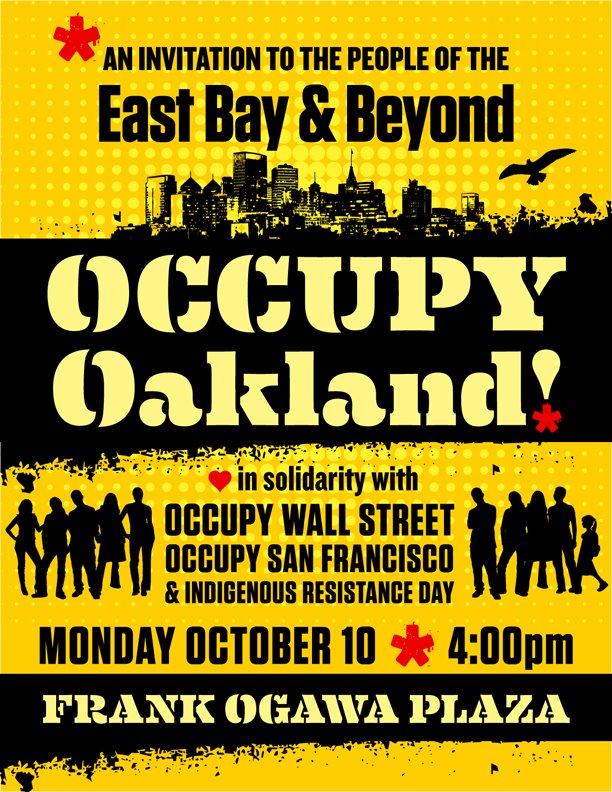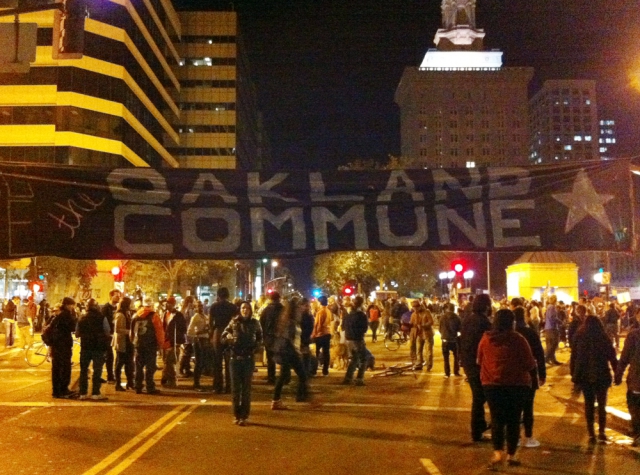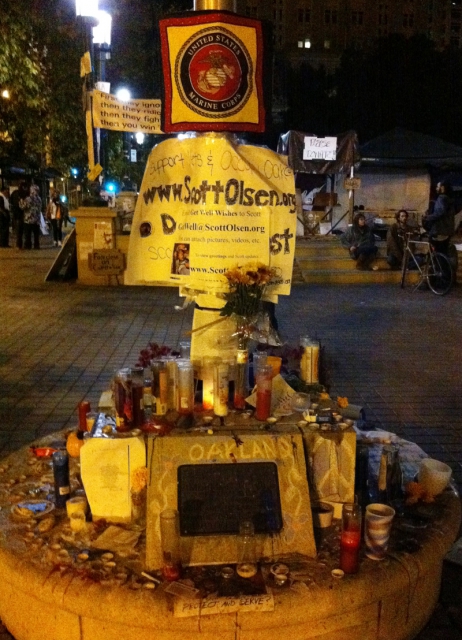Developer with shotgun threatened Occupy Oakland protesters

Oakland developer Phil Tagami is used to working (defrauding the public) behind the scenes to broker some of the biggest deals in town. Late Wednesday, he was using different persuasive skills - holding a loaded shotgunOccupy Oakland continues to kick through the boundaries of what was previously thought possible, upping the ante of what it means to resist against corporate greed and state oppression. Just one day after a hundred people were arrested, two encampments were physically smashed to the ground, and a thousand supporters were attacked by police with chemical weapons and projectiles in a manner that shocked the conscience of the nation, Occupy Oakland collectively took the audacious and ambitious step of calling for the first General Strike in America in sixty-five years.
But while evictions are taking place elsewhere in the US, organisers in New York's Zuccotti Park, the flagship protest centre, are trying to strengthen their organisation and formalise their political demands. "If you start something in the wild, it stays wild – but you have to train it," said Demetrius Subayar, a protester from Manhattan.
With more than $400,000 in donations so far and thousands of participants and onlookers visiting Zuccotti park every day, the movement and its organisational structure continues to grow. Everything from finance and community relations to sanitation and legal representation are co-ordinated by "working groups" made up of anyone who wants to join.

Protesters - and anyone else who wants to attend - meet nightly at "general assembly" to discuss proposals, concerns and plans of action. The goal is decision by consensus. The meetings are scheduled for two hours but often run for longer, and have grown from a few hundred attendees in the early days of the protests to close to a thousand a night in recent days.
Other "semi-autonomous" working groups make hundreds of decisions about day-to-day operations, said Marina Sitrin, a lawyer and postdoctoral fellow at the City University of New York who sits on the legal and facilitation committees. "The only time decisions come before general assembly is when they are really large or will affect the whole body."
Argentinians "looked to one another and began organising in neighbourhoods, schools and workplaces," she says. "It's a social relationship."The consensus-driven organising structure draws from earlier movements including the anti-nuclear movement of the 1970s and the anti-globalisation protests of the 1990s and early 2000s.
As attendance has grown, the general assembly has become more unwieldy. "A lot of people are coming in, we're starting to call them tourists, and voting on stuff for people in the park," said Elisa Miller, who came from New Orleans and has been sleeping in Zuccotti Park for nearly a month.
"Someone sent a box of pineapples from Hawaii," said Justin Strekal, a member of the shipping, inventory and storage group who withdrew from the fall semester at Cleveland State University in Ohio to come to New York. Organisers had been storing supplies in plastic bins and trash bags in the park, but they now store them in space donated by the United Federation of Teachers.
The movement is also growing virtually. Global protesters communicate using a programme called mIRC, a chat system for Windows, preferred by the Anonymous network of hackers.
"Everyone thinks we all just chat on Facebook and Twitter, but that is just what we want you to believe," said Marcus Sky of Indymedia, a network of media activists




No comments:
Post a Comment